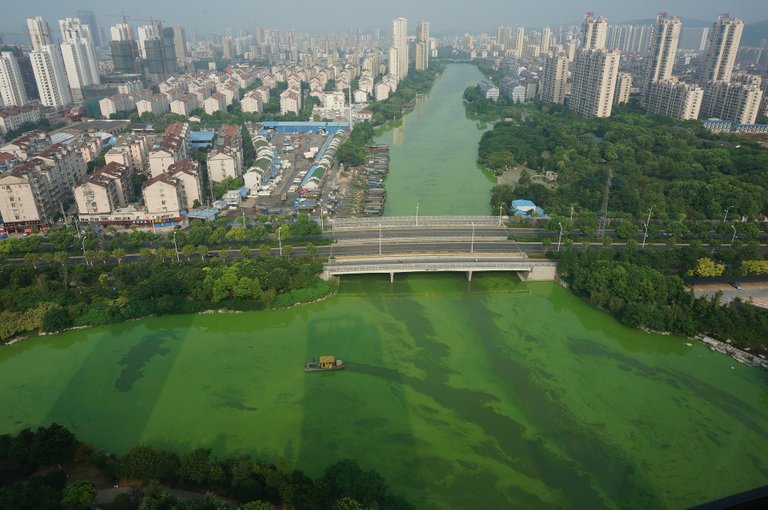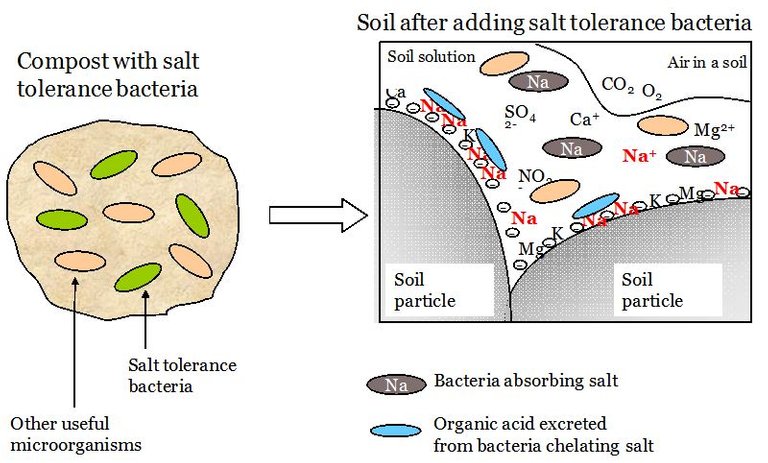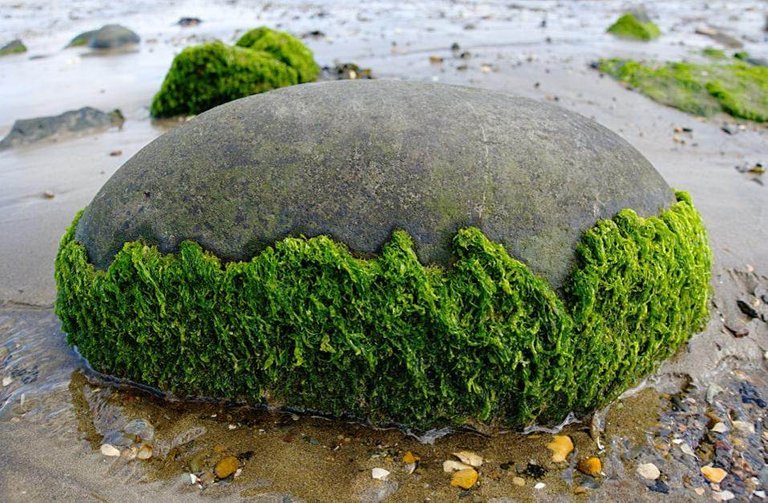BIOTECHNOLOGY// The bioremediation process in the treatment of contaminated wáter

Author: @madridbg, through Power Point 2010, using public domain images.
Dear members of the #hive platform who are passionate about scientific content I would like to present you with a delivery for socializing contents of environmental interest with an investigative focus, under a flexible structure. Contents that we will share through the @ecotrain community which has been at the forefront of topics associated with sustainability and life in balance with the environment.
INTRODUCTION
Industrial processes have been one of the factors that have caused the greatest damage to the aquatic systems of the planet, as a result of the constant discharges of toxic waste that reach the various bodies of water in our environment. Waste that on the one hand is loaded with nutrients for the vegetative species of the area, which has caused a substantial growth of the same, generating environmental problems such as eutrophication, where the biomass of the species grows dramatically threatening the life of the rest of the organisms, product of excessive consumption in the concentrations of available oxygen.
Similarly, the waste presents high concentrations of heavy and toxic elements such as mercury (Hg) that tend to exhibit a high accumulation and mobility, which facilitates them to enter the food chain and move from one species to another, causing serious damage to them.

Fig. 2. Heavy metals such as mercury accumulate and enter the food chain from one species to another. Author: Raquelarellanoleo
In this sense, there are several studies carried out on bio-remediation processes with the sole objective of carrying out a comprehensive treatment on water with high concentrations of toxic materials. Therefore, the objective behind this research is oriented in a descriptive process that allows us to understand the functioning of the use of micro-algae as a mechanism that allows the degradation and transformation of contaminating materials, among which are pesticides, hydrocarbons, among others, that threaten the health of the species.

Fig. 3. The eutrophication process threatens the bio-diversity of the species, products of the competition for nutrients and for the low concentrations of available oxygen. Author: xu zhenhao
CONCEPTUAL CONTRIBUTIONS ON BIO-REMEDIATION
The problem of pollution in the different fronts of our planet, has activated the alarms of society, which has not forced to seek alternatives to balance the environmental problems that threaten the welfare of our planet.
In this sense, the process of bio-remediation arises as a technological alternative that allows the use of plants, fungi, bacteria or any microorganism, which develops a process of environmental restoration. The technique is based on the use of biological processes, with chemical contributions that allow the decomposition, degradation and in many cases elimination of the harmful substances in a determined site.
Historically the term remediation was coined in the early 80's and referred to the use of physical-chemical variables to avoid damage at ground level. However, the bio-rremediation, with the particular that in this process are used living organisms whose biological behavior allows to attack naturally certain pollutant compounds.
Among the most outstanding characteristics of the process we can mention that:
1. It focuses on the use of microalgae and cyanobacteria, which are organisms that allow the degradation of organic materials.
2. The species used are extracted from the place where the contamination process is observed.
3. A pigmentation process is used to measure the concentrations of contamination present in the area.
4. The enzymatic activity of the enzymes involved in the process, allows a detailed analysis of the amount of contaminants removed.

Fig. 4. Chemical representation of the bio-remediation process. Author: By M. Azizul Moqsud and K. Omine
Although there are several studies conducted in this field, in the opinion of Ferrera-Cerrato et al (2006), previous research and demonstrate that there must be ideal conditions at the physical-chemical and biological level for organisms to achieve their potential, therefore the variables pH, concentration of contaminants and concentration of microalgae or microorganisms must be manipulated.
ORGANIC SUBSTANCES AND THEIR TRANSFORMATION INTO AQUATIC ENVIRONMENTS
At the level of industrial chemistry, organic compounds are the most relevant in natural systems, due to the capacity of the carbon atom to synthesize new materials with the same or different elements. In turn, most living species are formed in their constitution by this element.
In this sense, it is not surprising that this type of material can be modified or transformed by the species present in the aquatic environment, so that marine algae have developed a sophisticated mechanism that allows them to decompose and transform organic substances of the highly polluting aromatic type, which can be commonly found in natural tributaries and in greater concentration in the waste water produced by the chemical and industrial processes generated.

Fig. 5. Algae, micro-algae and cyanobacteria play an important role in the degradation of pollutants in water basins. Author: Andrew Martin
Chemically, the process of transformation of the polluting products by the micro-algae and cyanobacteria is due to the amount of nitrogen and reduced oxygen that they contribute to the macrobiotics of the ecosystems, which facilitates the decomposition, degradation and transformation of the polluting substances. Consequently, many of these species are used in the process of identifying toxicity and environmental pollution. [1]
FINAL CONSIDERATIONS
The aspects handled in this publication, allow us to present a biotechnological process with a lot of potential, although the contributions are few, the results obtained at laboratory level until now are promising, we must continue to deepen in this type of materials so that we can replicate it on a large scale and use it as a strategy of preservation and environmental care. To do this we must focus on standardizing the variables involved according to the kinetic parameters present in the degradation of pollutants.
BIBLIOGRAPHY CONSULTED
[1] E.J. Olguín et al. (2007). Mangrove contamination by hydrocarbons and bioremediation, phytoremediation and restoration strategies. Int. Rev. Contam. Ambient. 23 (3) 139-154. Article: Online Access
[2] Ferrera-Cerrato et al. (2006). Soil and water bioremediation processes contaminated by petroleum hydrocarbons and other organic compounds. Latin American Journal of Microbiology. Article: Online Access
[3] Garzón J. Rodríguez. Miranda J. Hernandez C. (2017). Review of the contribution of bioremediation to solve pollution problems and its relationship with sustainable development. Rev Univ. of Health. 19(2):309-318 Article: Online Access
[4] Ome Barrera, Ó.; Zafra Mejía, C. (2018). Key factors in bioremediation processes for wastewater treatment. A review. Magazine U.D.C.A Actualidad & Divulgación Científica under a Creative Commons CC BY-NC 4.0 license. Article: Online Access
OF INTEREST
•


0
0
0.000
https://twitter.com/BGMadrid/status/1347014161511931906
https://twitter.com/BGMadrid/status/1347014662546665473
#posh twitter
https://twitter.com/BGMadrid/status/1347014662546665473?s=20
Your post has been submitted to the OCD community curation initiative for some great upvotes! OCD are currently supporting posts in HIVE communities!
Congrats and keep posting great content!
Greetings @ecotrain thank you for your support and positive feedback on my publication
https://twitter.com/Algae_Chat/status/1347095326021267456